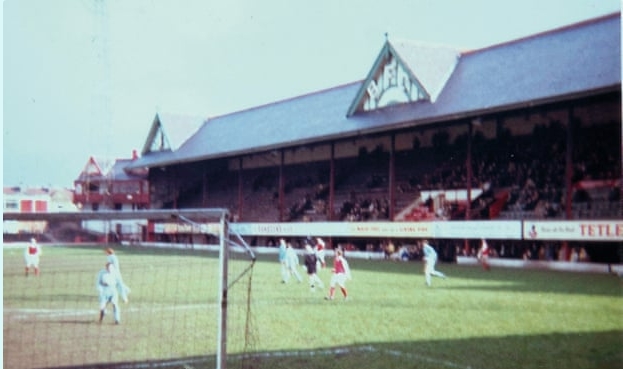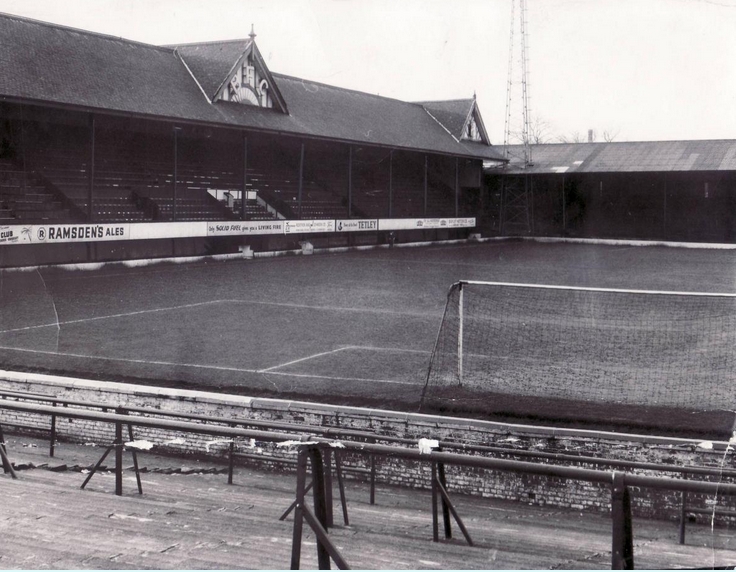 |
 |
 |
Bradford Park Avenue
Bradford Park Avenue FC ! Most football supporters under the age of 50 will probably know of this club as a Non League team that has been back and forth between The Northern Premier League and National League North for the last 2 or 3 decades. For the older ones amongst us, they may well remember Park Avenue as a Football League club who once played in a grand old stadium until they lost League Status in 1970, to be replaced by Cambridge United.
Bradford PA are one of only 35 Clubs to have played in all 4 top Divisions of English Football. The club spent 3 seasons in the 1st Division between 1914 and 1921, although Football was suspended during the years of World War 1. Up to 1950 they remained pretty much in the 2nd Division and were at the time seen as the bigger of the two Bradford clubs. . The name Park Avenue derives from the clubs old stadium on Horton Park Avenue and was used to avoid confusion with Bradford City. Originally the Club was just Bradford FC. The only League club ever to have Initials in brackets. Bradford (PA).

The impressive old stand at Park Avenue before demolition in 1980 with the “Dolls House” in the corner
Following relegation from The Football League in 1970 Park Avenue gradually fell into disrepair with the Main Stand and the adjoining Doll’s House, which resembled Fulham’s Craven Cottage, being eventually demolished in 1980. The pitch, meanwhile, disappeared under overgrown, weeds, trees and rubbish, and, in 1988, The pitch was later cleared and several football matches were played there. However, hopes of a return to their spiritual home were finally ended when an indoor cricket centre was built on part of the pitch. All that remains now of the old ground is a badly overgrown Horton Park End terrace, complete with turnstile block and concrete floodlight pylon base.

Park Avenue was a big stadium in its time and thought to be much better than Valley Parade, home of Bradford City
The main stand was built between the Football pitch and the cricket pitch. It was possibly unique, in that it had seats facing both ways. (picture below) it had seating for 4,000. The roof of the stand had 3 gables, two at either end and a Central Gable with a clock. On the Cricket side of the ground, covered terracing was available along with a few rows of seats.

An Ariel photo showing the cricket and football grounds side by side
The Ground following it’s completion had a Capacity of 37,000, however the highest recorded attendance was 32,429 for a Christmas day Derby against Leeds United in 1931
At the left corner of the main stand stood the the building that housed the changing rooms, baths, referees rooms and the committee room. This was commonly known as The Dolls House and survived until demolition in 1980.

An Impressive model of Park Avenue in it’s prime
The ground had large terraces behind each goal, the Horton Park End had a roof erected after the Second World War. The Low Stand opposite the main stand was rarely photographed and little is known as to when it was erected. The oldest photo I could find (below) shows the stand during a rugby match around 1900

The "Low Stand" 5 years after Bradford PA's Relegation. Photo Courtesy of Bob Lilliman

A very grainy image of The “Low Stand” at Bradford Park Avenue around 1900
The current Bradford Park Avenue now play at The Horsfall Athletics Ground in Bradford and compete in the National League North. The club have ambitions of one day returning to the football League. Cricket is still played to this day at Park Avenue and there are plans to restore the ground (The cricket side at least) to it’s former glory.

An atristic account of a packed Park Avenue

Pitch still in good order but clearly the weeds are begining to take over. Photo courtesy of Bob Lilliman

The programme cover from Bradford PA's first ever non league Match v Netherfield (Now Kendal Town)
Next time, a look back at Haig Avenue, Southport during their Football League Days. Link on the home page